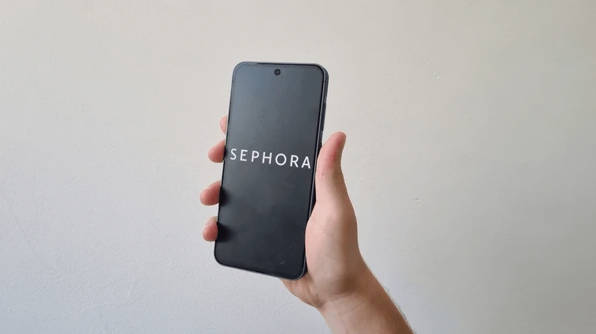
Ultima Markets App
Trade Anytime, Anywhere
Important Information
This website is managed by Ultima Markets’ international entities, and it’s important to emphasise that they are not subject to regulation by the FCA in the UK. Therefore, you must understand that you will not have the FCA’s protection when investing through this website – for example:
- You will not be guaranteed Negative Balance Protection
- You will not be protected by FCA’s leverage restrictions
- You will not have the right to settle disputes via the Financial Ombudsman Service (FOS)
- You will not be protected by Financial Services Compensation Scheme (FSCS)
- Any monies deposited will not be afforded the protection required under the FCA Client Assets Sourcebook. The level of protection for your funds will be determined by the regulations of the relevant local regulator.
Note: Ultima Markets is currently developing a dedicated website for UK clients and expects to onboard UK clients under FCA regulations in 2026.
If you would like to proceed and visit this website, you acknowledge and confirm the following:
- 1.The website is owned by Ultima Markets’ international entities and not by Ultima Markets UK Ltd, which is regulated by the FCA.
- 2.Ultima Markets Limited, or any of the Ultima Markets international entities, are neither based in the UK nor licensed by the FCA.
- 3.You are accessing the website at your own initiative and have not been solicited by Ultima Markets Limited in any way.
- 4.Investing through this website does not grant you the protections provided by the FCA.
- 5.Should you choose to invest through this website or with any of the international Ultima Markets entities, you will be subject to the rules and regulations of the relevant international regulatory authorities, not the FCA.
Ultima Markets wants to make it clear that we are duly licensed and authorised to offer the services and financial derivative products listed on our website. Individuals accessing this website and registering a trading account do so entirely of their own volition and without prior solicitation.
By confirming your decision to proceed with entering the website, you hereby affirm that this decision was solely initiated by you, and no solicitation has been made by any Ultima Markets entity.
I confirm my intention to proceed and enter this website Please direct me to the website operated by Ultima Markets , regulated by the FCA in the United KingdomIs the Sephora Stock A Smart Buy Now?
When people search for Sephora stock, they’re really wondering how they can invest in Sephora’s growth. However, the reality is that you can’t buy Sephora shares directly because the company is a private subsidiary of LVMH Moët Hennessy Louis Vuitton, the world’s largest luxury goods group.
That means investors gain exposure to Sephora’s success through LVMH stock, which trades on Euronext Paris (Ticker: LVMH) and as an ADR in the U.S. (Ticker: LVMUY). Sephora’s performance plays a meaningful role in LVMH’s valuation, making it one of the key growth drivers inside the conglomerate’s diversified luxury portfolio.

Understanding Sephora’s Place in LVMH
LVMH owns more than 70 premium brands spanning fashion, jewelry, cosmetics, and retail, including Louis Vuitton, Christian Dior, TAG Heuer, and Moët & Chandon. Within this ecosystem, Sephora anchors the Selective Retailing division, a segment that continues to expand even as other divisions face cyclical slowdowns.
In 2025, Sephora stood out as one of LVMH’s most resilient and profitable businesses. The company strengthened its global market share, maintained strong in-store traffic, and delivered standout brand launches such as Hailey Bieber’s Rhode, described by management as a record-breaking rollout.
As noted by LVMH CFO Cécile Cabanis, the first quarter saw slower U.S. e-commerce momentum, largely due to Amazon’s aggressive pricing tactics. Despite this, Sephora’s brick-and-mortar stores remained solid performers. As the year progressed, overall sales improved, helping Selective Retailing post some of the group’s best growth rates and supporting the long term case for Sephora stock.
What 2025 Revealed About Sephora’s Performance
By mid-2025, LVMH reported that Selective Retailing delivered further growth, with Sephora repeatedly cited for revenue gains and global market share advances. Its omnichannel model of combining experiential retail, digital personalization, and exclusive brand collaborations remained a cornerstone of success.
In the third quarter, LVMH highlighted Sephora once again as a “remarkable performer”, driving a 7% organic increase in Selective Retailing revenue and helping offset slower categories such as Fashion & Leather Goods.
Why Sephora Continues to Gain Share
1. Experience Over Price
Sephora avoids deep-discount strategies and instead focuses on premium service, expert advice, and try-on experiences that encourage discovery. This approach protects margins and builds customer loyalty, even as online marketplaces like Amazon compete aggressively on price. Its unique business model, which allows customers to test and interact with products before purchasing, has been a significant driver of its growth.
2. Exclusive Launch Engine
The Rhode collaboration showcased Sephora’s ability to amplify trending brands through exclusivity and fast global rollouts, a major competitive edge in an increasingly crowded market.
3. Global Reach and Expansion
Operating over 2,700 stores across 35 countries, Sephora continues to grow across Asia, Europe, and North America. Partnerships such as Sephora at Kohl’s in the United States and new flagship openings in Asia have expanded its physical footprint and brand awareness. The company offers nearly 340 brands, showcasing its extensive product portfolio.
Competitive Landscape
The beauty retail market is becoming more fragmented. Ulta Beauty, Estée Lauder, and Coty are key competitors in the prestige segment, while Amazon and TikTok Shop keep gaining share among price-sensitive consumers. Sephora also faces competition from L’Oréal, which manufactures and markets prestigious beauty brands sold at Sephora.

Sephora’s defence lies in deepening brand exclusivity, expanding loyalty programs, and enhancing the integration between digital convenience and in-store experience. This hybrid model continues to resonate across demographics and regions, giving Sephora a durable moat even as online players grow. Its robust digital platform is a key component of this omnichannel strategy, enhancing customer experience across both online and in-store shopping, which is helpful for anyone evaluating Sephora stock as part of a broader luxury allocation.
How to Invest in Sephora Stock
Because Sephora is privately held, investors seeking exposure must do so through LVMH. There are several ways to invest:
- Buy LVMH shares on Euronext Paris under the ticker LVMH (MC.PA).
- Purchase U.S. ADRs (LVMUY) for dollar-denominated exposure.
- Invest via global luxury or European equity ETFs and mutual funds that include LVMH as a core holding.

This route gives indirect access to Sephora’s growth story while also capturing the broader LVMH portfolio, from Louis Vuitton to TAG Heuer, offering diversification within the global luxury sector.
Could Sephora Go Public?
As of late 2025, there is no credible sign that LVMH plans to spin off or list Sephora. The company continues to describe Sephora as a core growth engine rather than a standalone candidate for an IPO.
LVMH’s management has not hinted at any restructuring or capital-raising moves that would support an initial public offering. Historically, LVMH has preferred to retain full ownership of its strongest brands to preserve control and capture their full earnings power. Unless this strategy changes, a Sephora IPO appears highly unlikely in the near future.
Key Risks to Watch
- Marketplace Pricing Pressure: Amazon’s discounting continues to weigh on Sephora’s U.S. online traffic.
- Macroeconomic and Currency Fluctuations: Shifts in exchange rates and regional demand can influence reported results.
- Conglomerate Exposure: Investing in LVMH means owning a broad mix of luxury businesses, not Sephora alone. Fluctuations in other divisions can affect overall performance.
Conclusion
If you believe prestige beauty will continue to outperform broader retail and that Sephora’s curated, experiential model will remain a key differentiator, then LVMH offers one of the most direct ways to invest in that trend. The beauty market’s shift towards luxury and premium products further strengthens Sephora’s position in the marketplace.
While early 2025 brought headwinds from aggressive online pricing, Sephora’s strong rebound, powered by record product launches, global expansion, and omnichannel growth reaffirmed its position as a central engine within LVMH’s success.
With no IPO on the horizon, LVMH remains the cleanest and most practical way to gain exposure to Sephora stock and to the broader luxury beauty market.
Disclaimer: This content is provided for informational purposes only and does not constitute, and should not be construed as, financial, investment, or other professional advice. No statement or opinion contained here in should be considered a recommendation by Ultima Markets or the author regarding any specific investment product, strategy, or transaction. Readers are advised not to rely solely on this material when making investment decisions and should seek independent advice where appropriate.












